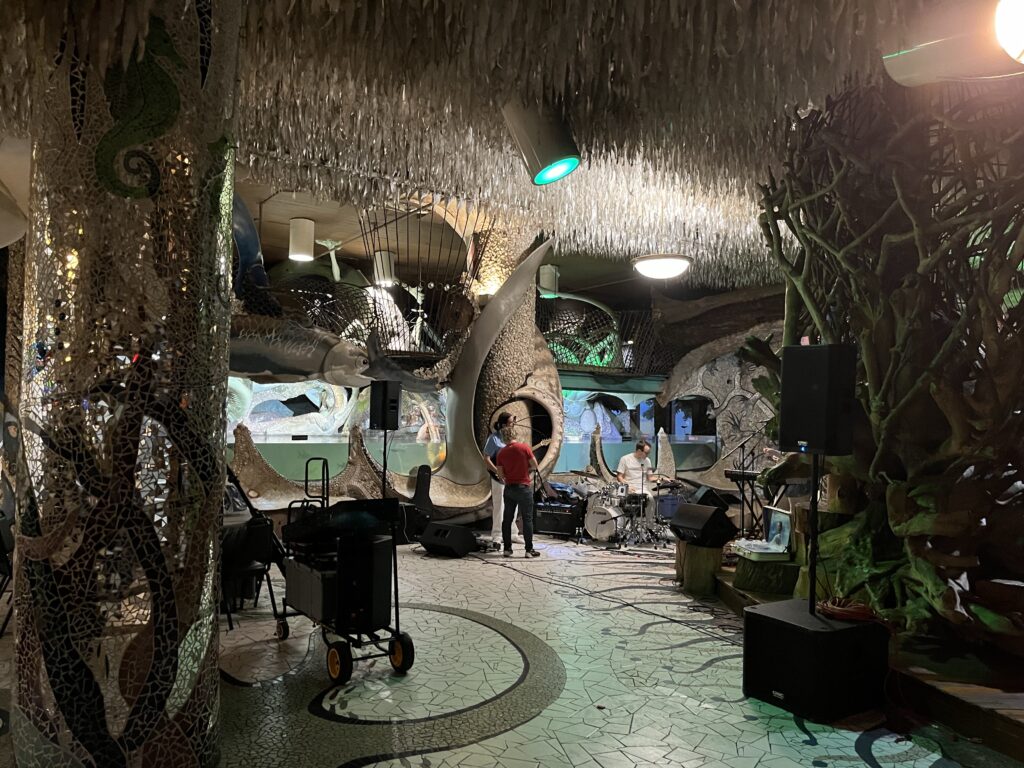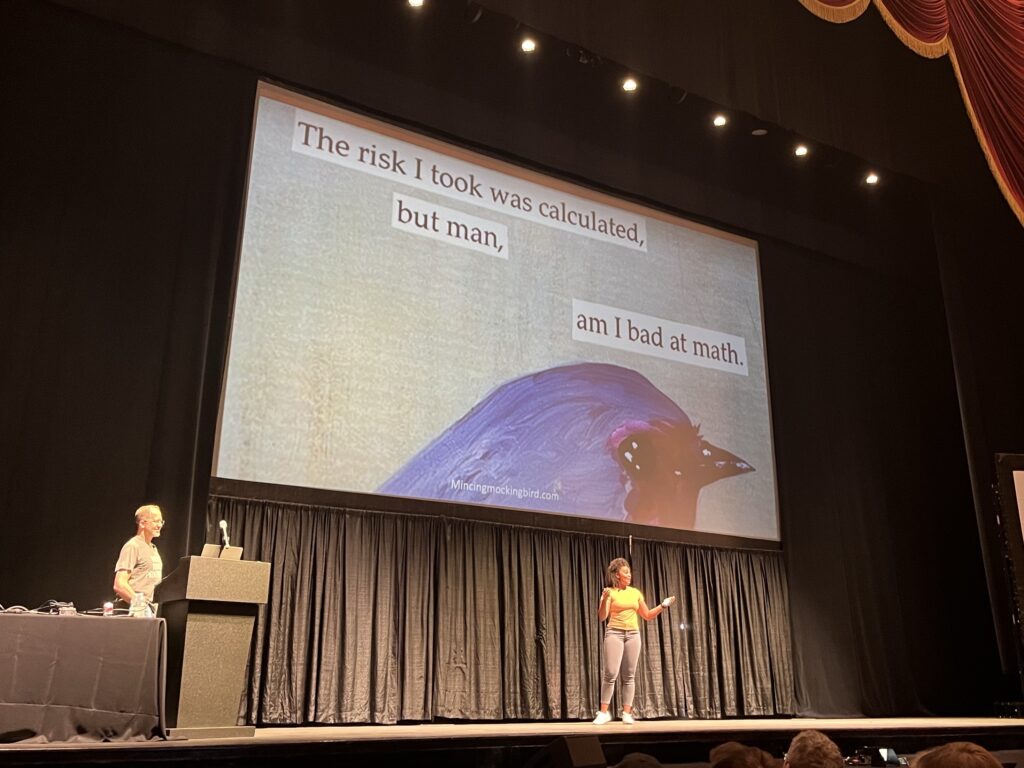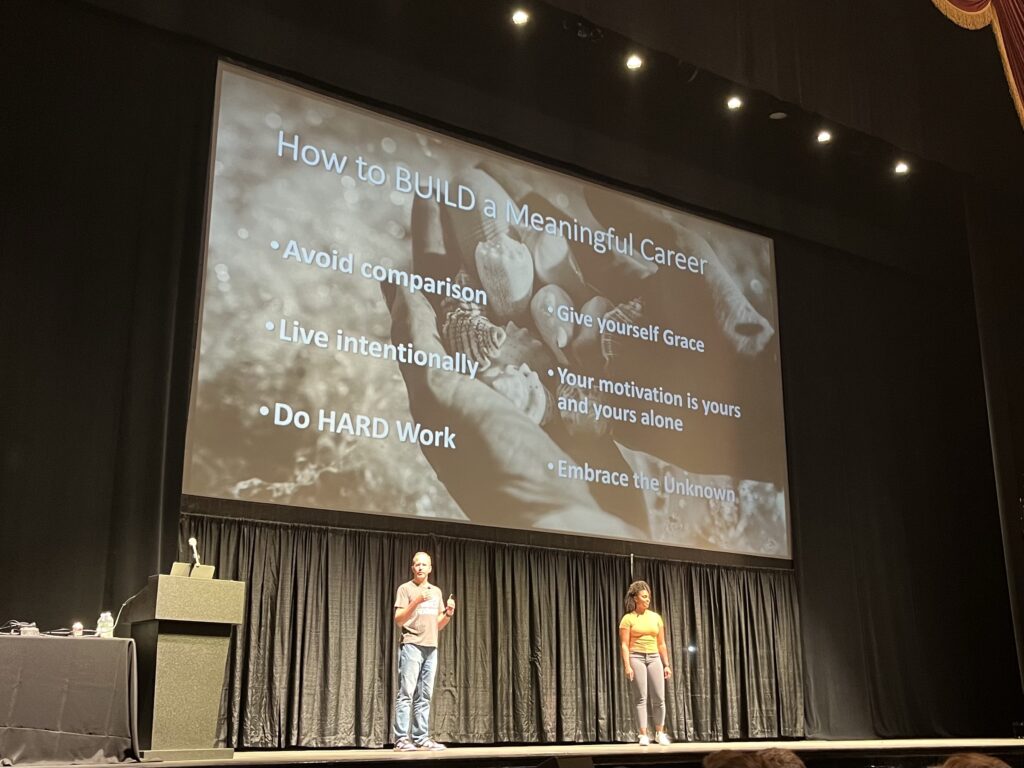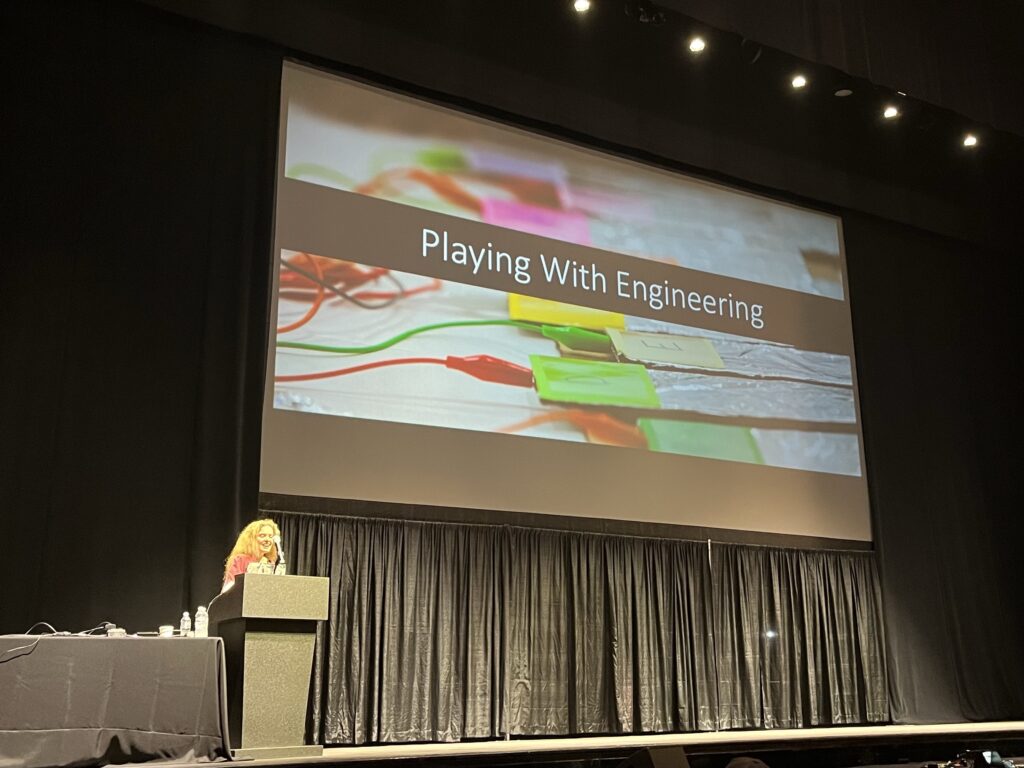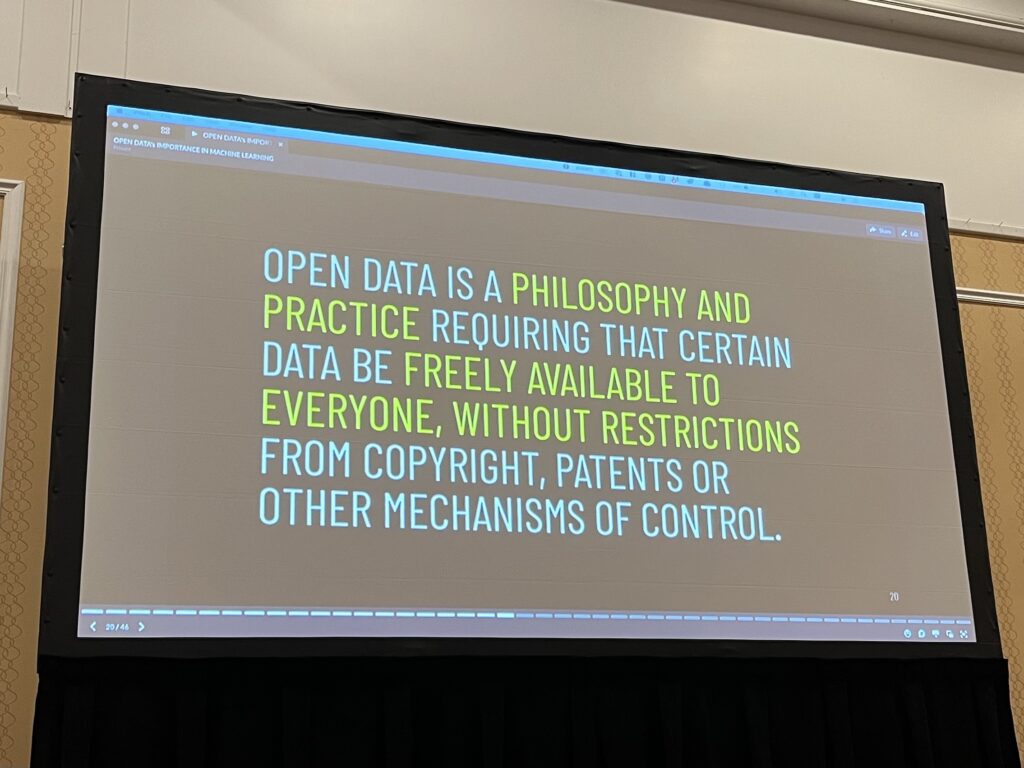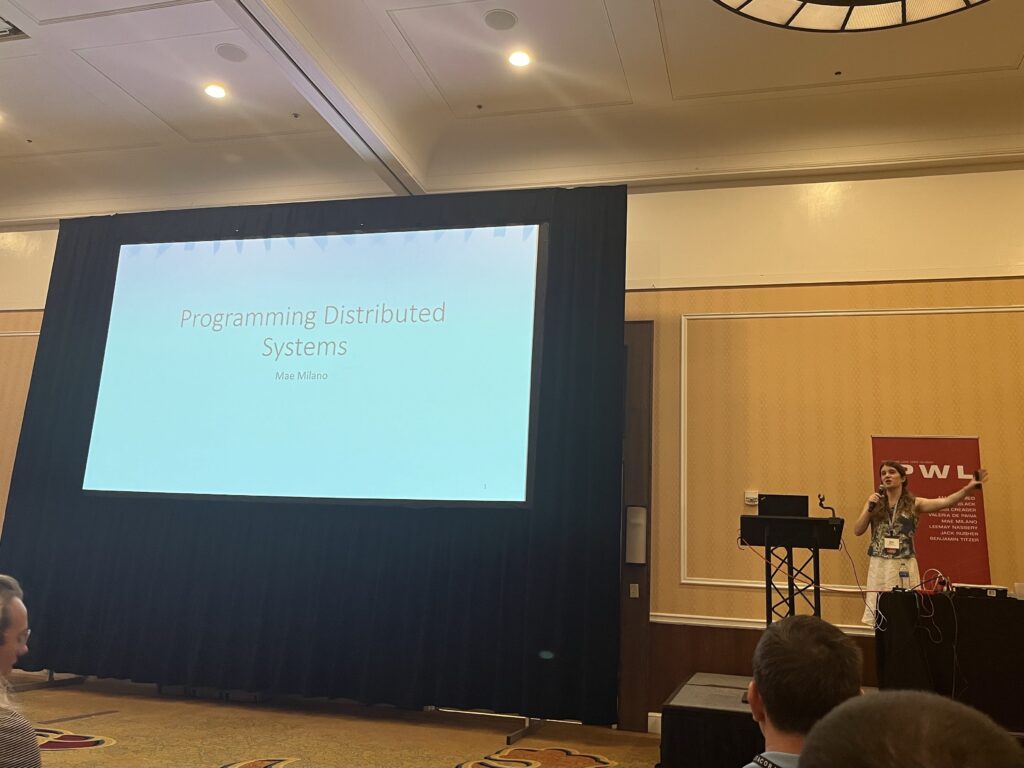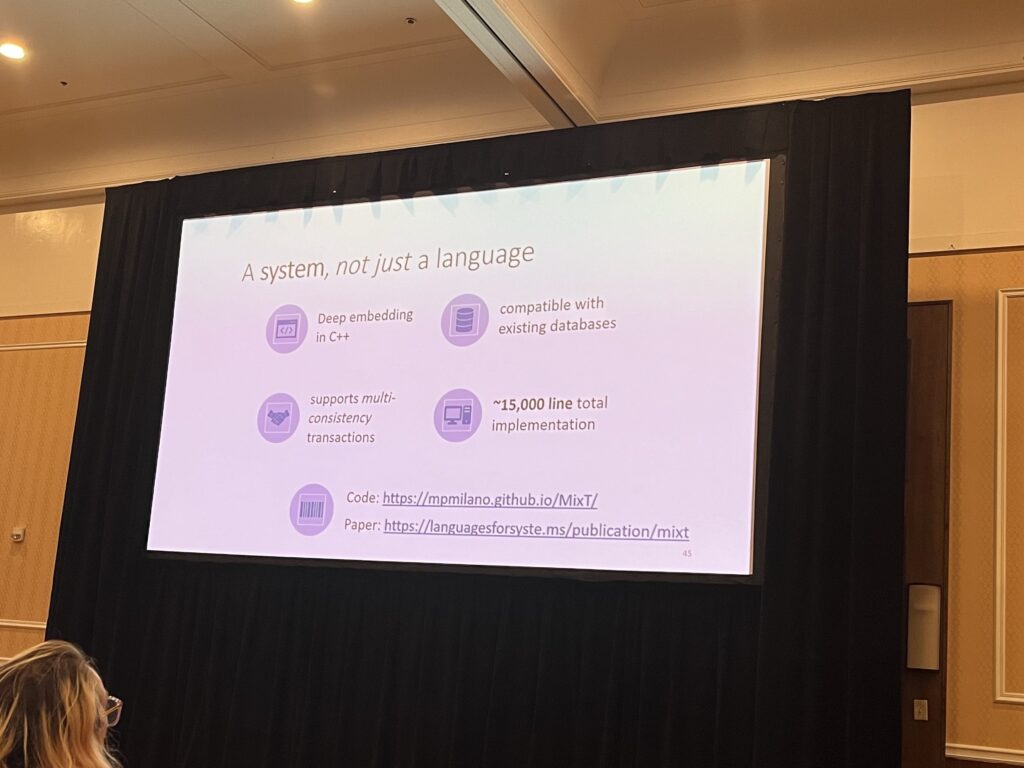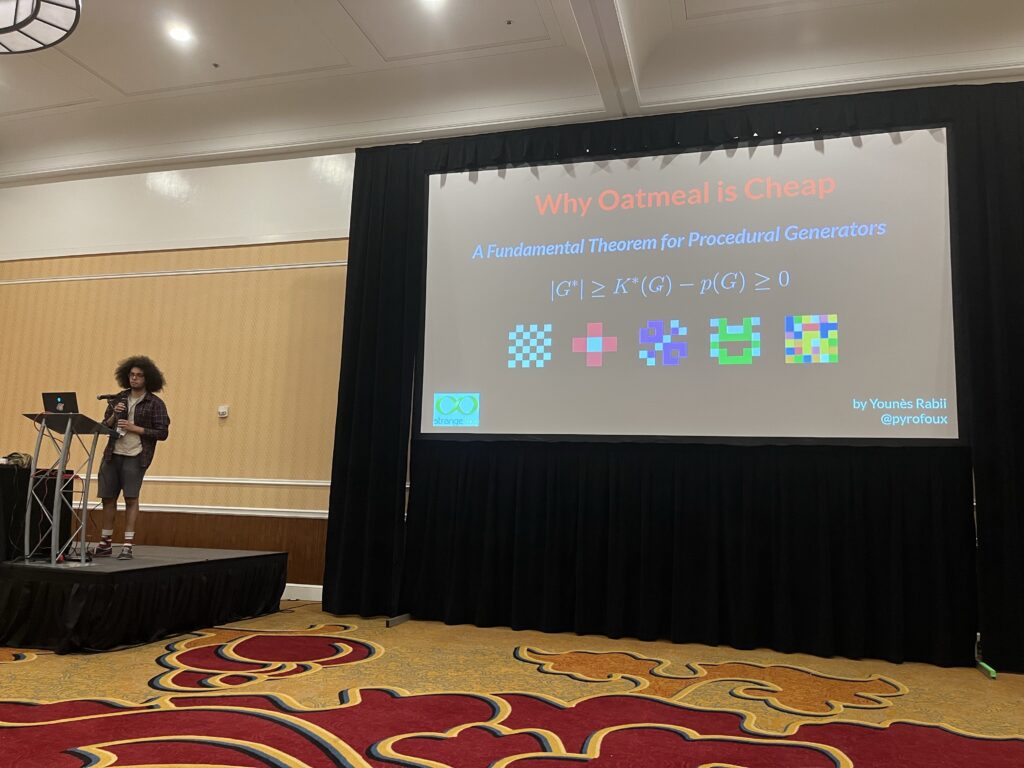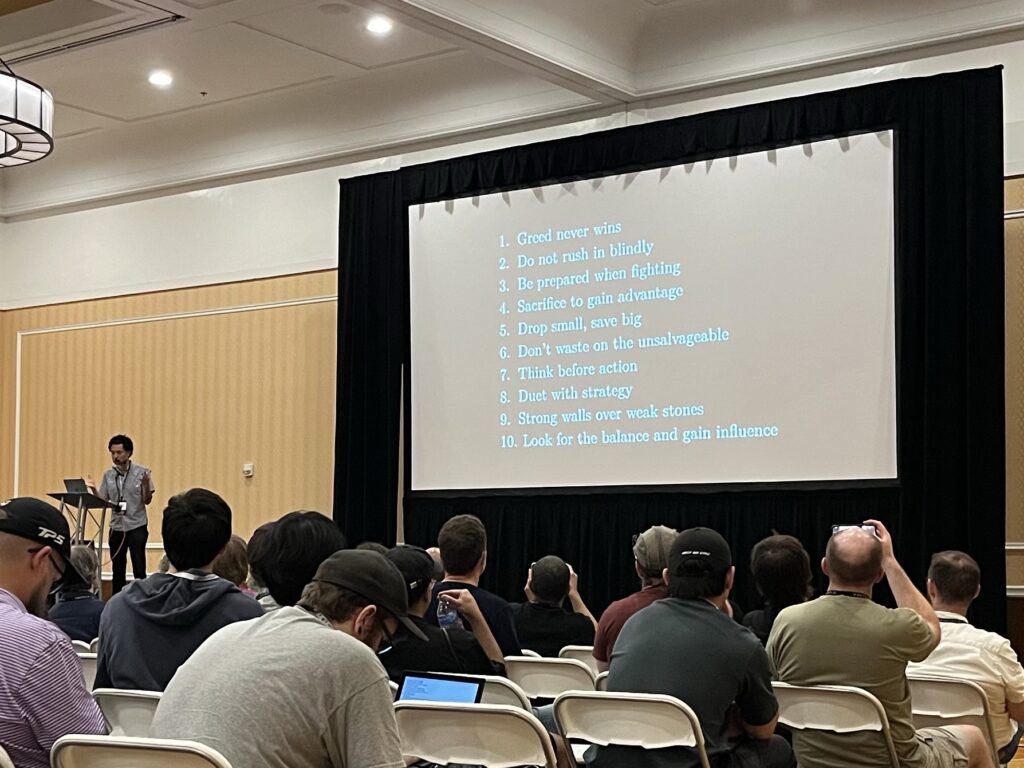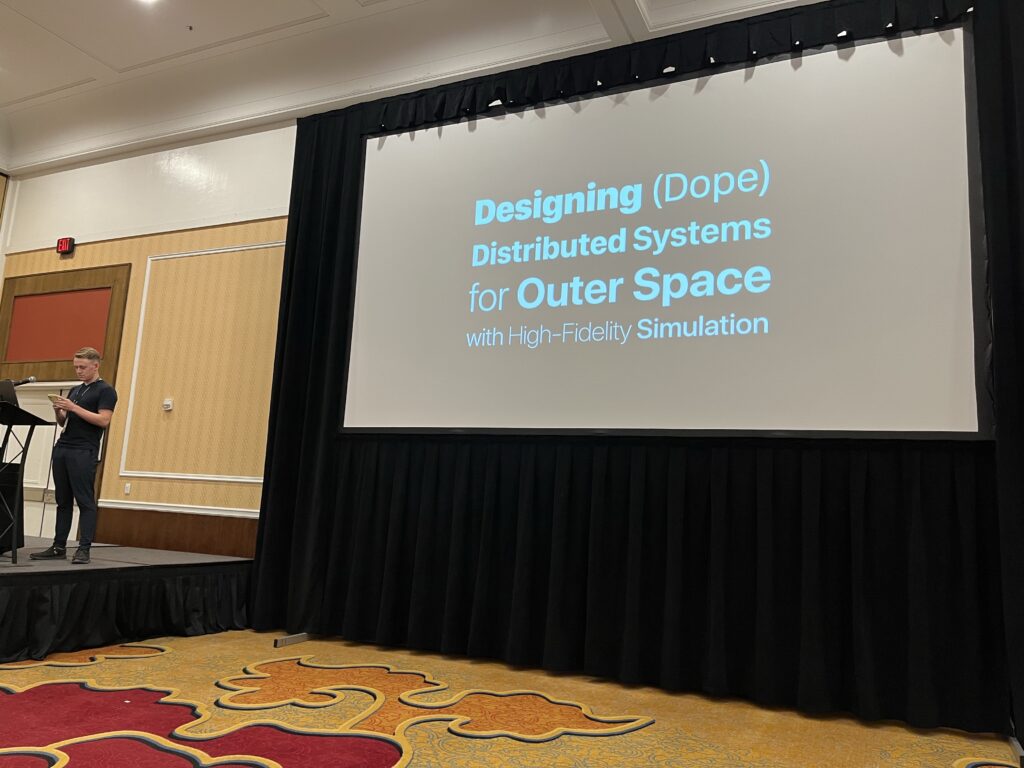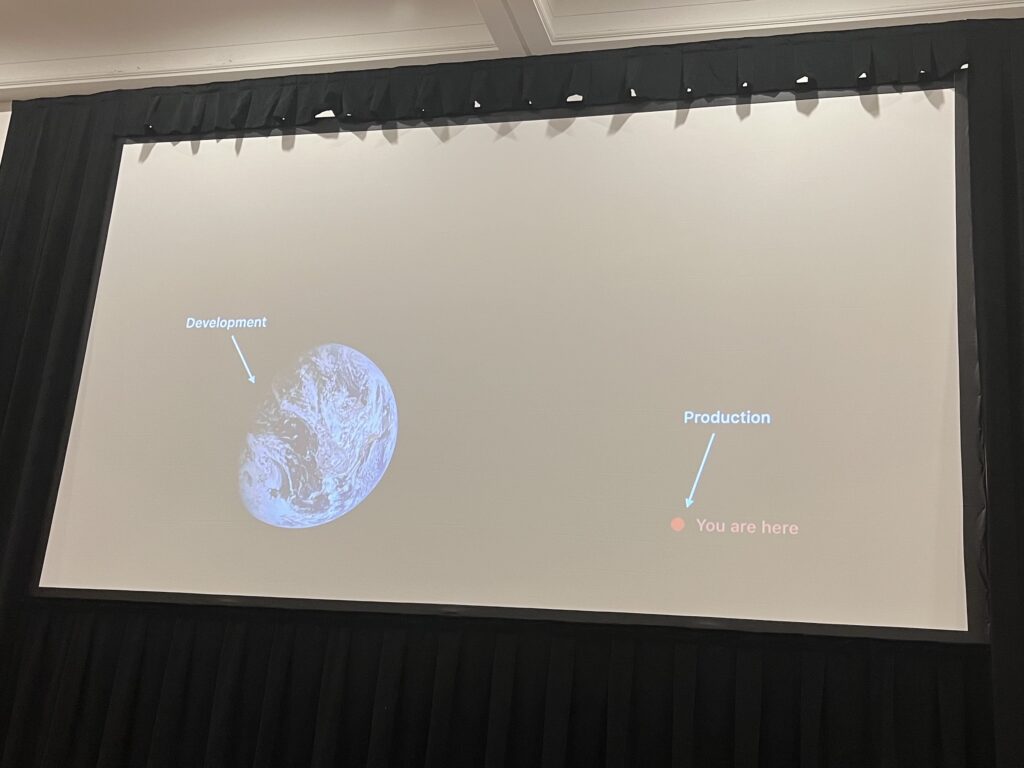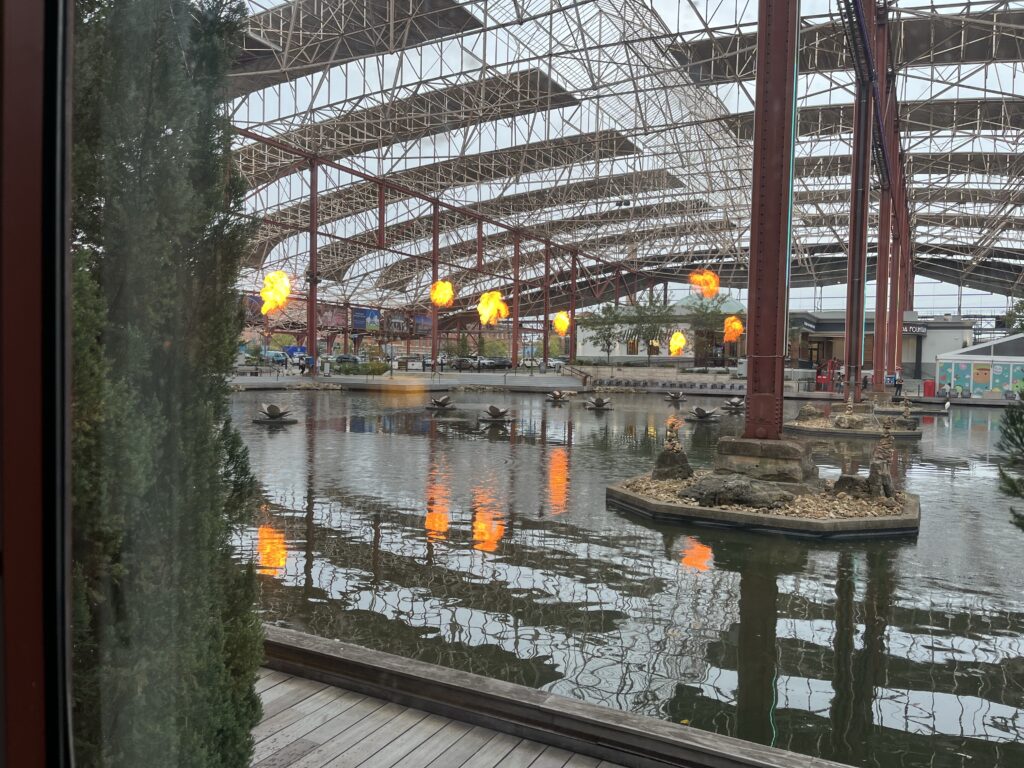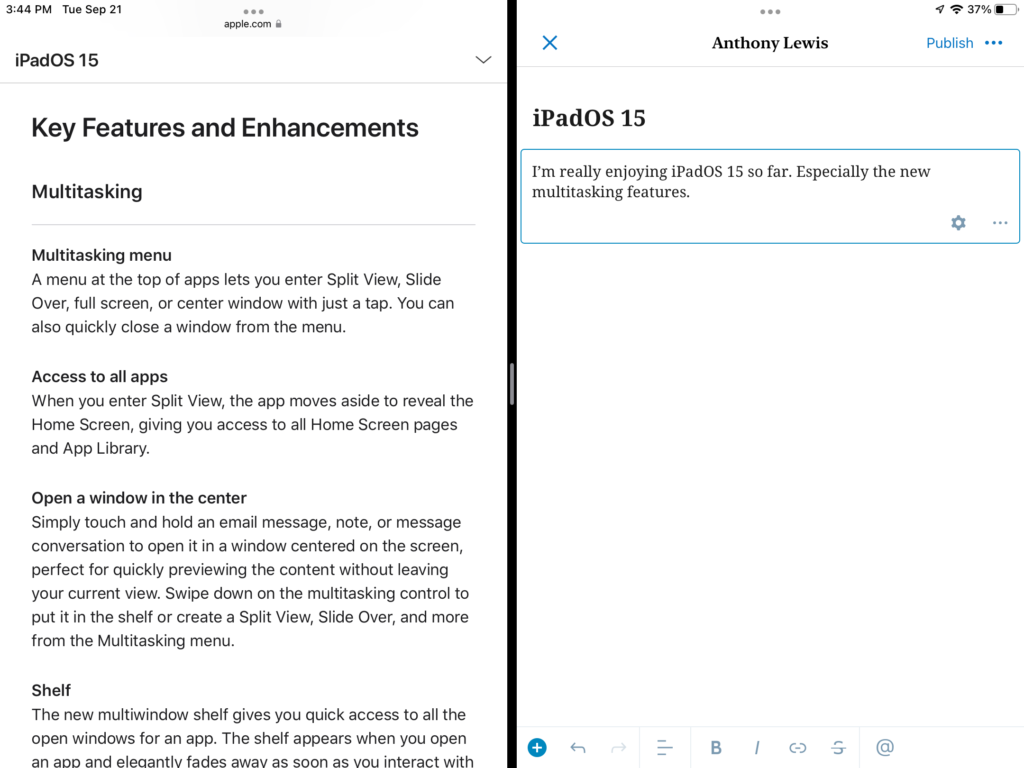Day two started off with your choice of talks.
Ectype – Bringing Type Safety (and more!) to Vanilla JavaScript
I started with Holly Wu talking about a new system for making JavaScript type safe.
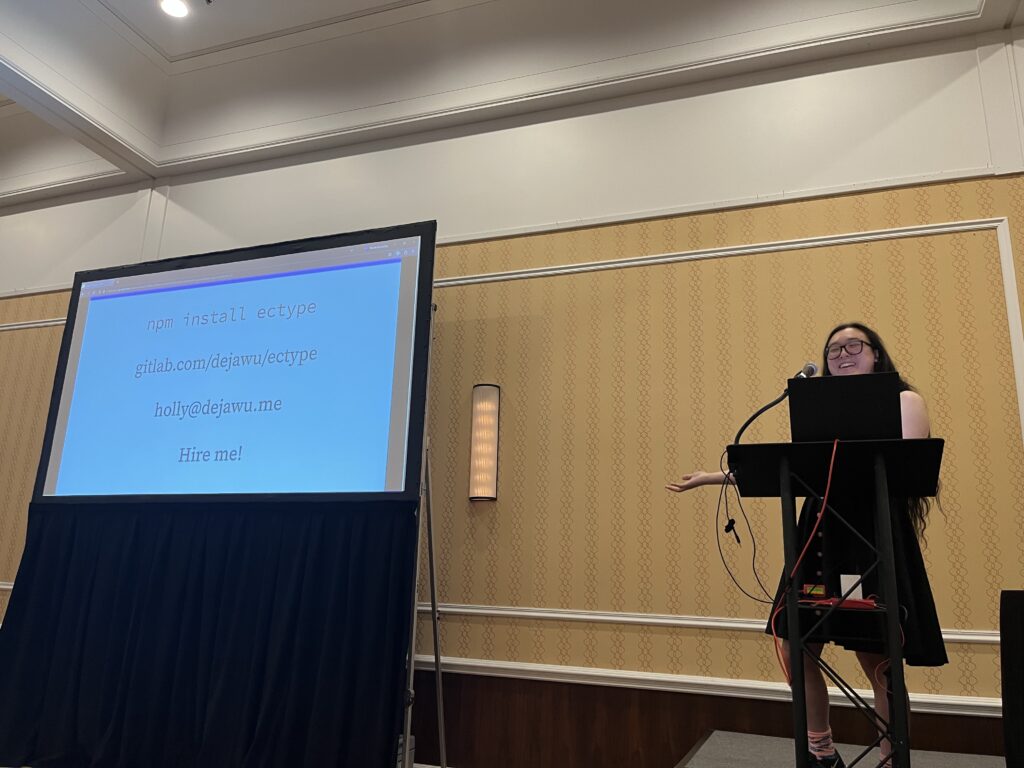
Ectype is a library and type checker that doesn’t require a build system of some other pre-compile step. Interesting stuff if you’re not into TypeScript.
The Economics of Programming Languages
Evan Czaplicki, creator of Elm, spoke to a packed room. I stood against the wall since there wasn’t an empty seat.
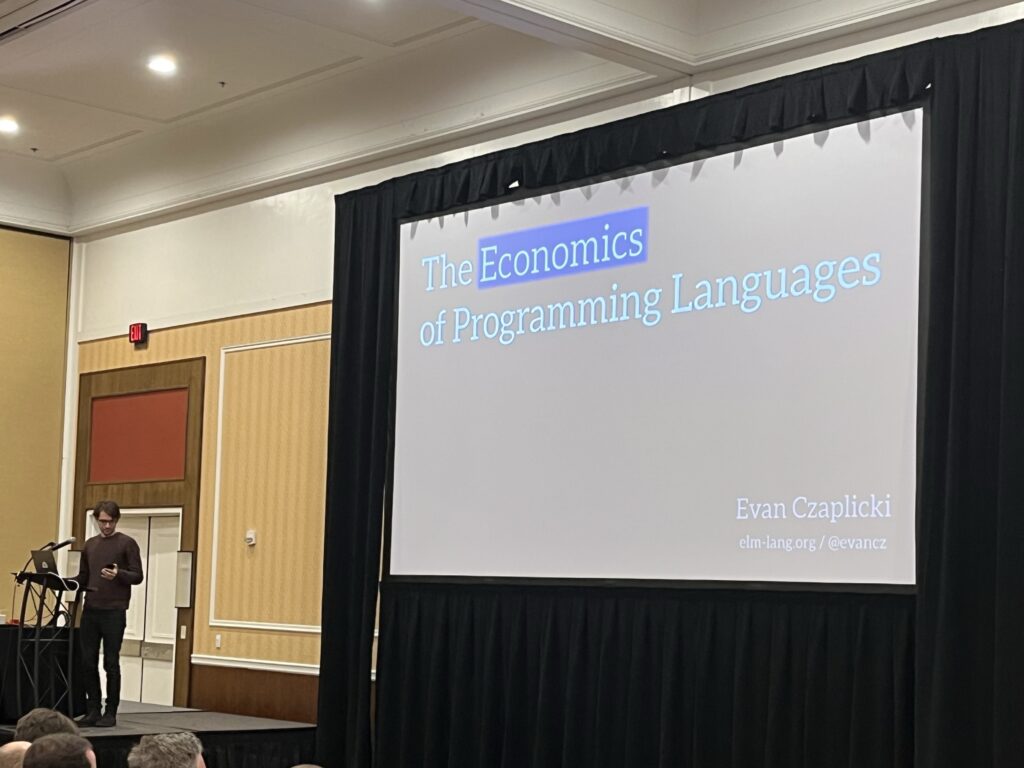
As the title says, he talked about the economics of creating your own language as opposed to languages like Swift and Go that are sponsored by a company. It’s tough to make a living doing your own thing.
A Long Strange Loop
Alex Miller created Strange Loop on October 22, 2009. He named it after a book that was sitting on his nightstand.
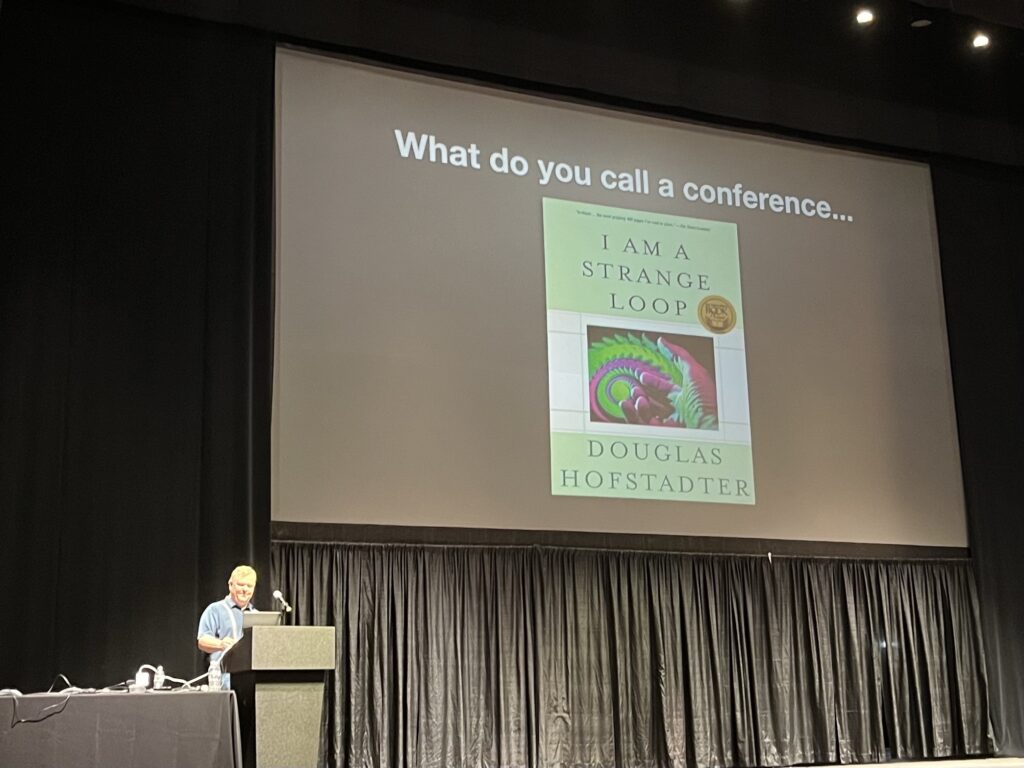
Alex talked about the origins of the conference and covered stats like the rise in attendance, the number of talks submitted, and some numbers about diversity.
There was an In Memoriam section mentioning three former speakers that have passed away.
Finally, Alex talked about why he’s ending the conference. It has achieved every goal he set for it. It’s getting harder to make sure the conference makes enough money to cover fixed costs.
He doesn’t want anyone else to take it over since the feeling of the conference is based on his beliefs, but he encouraged anyone who wants to start a conference to do their own thing.
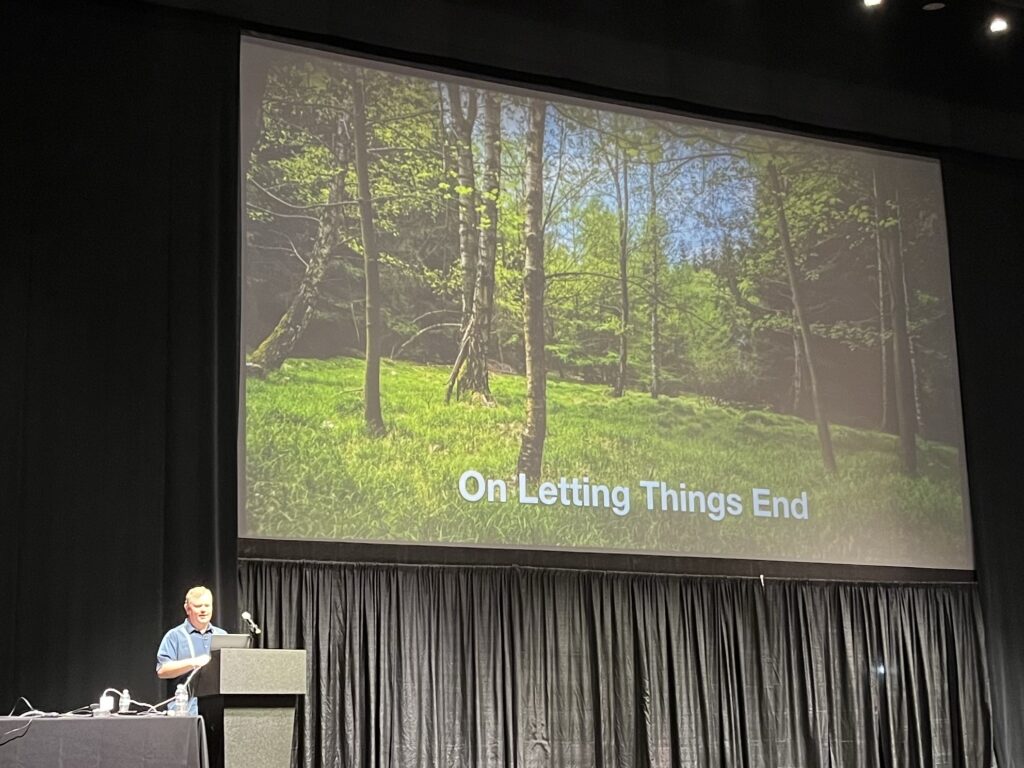
I can’t believe this is the last Strange Loop. There’s no other conference like this.
Making Hard Things Easy
Julia Evans cheered us up with her wit and drawings.
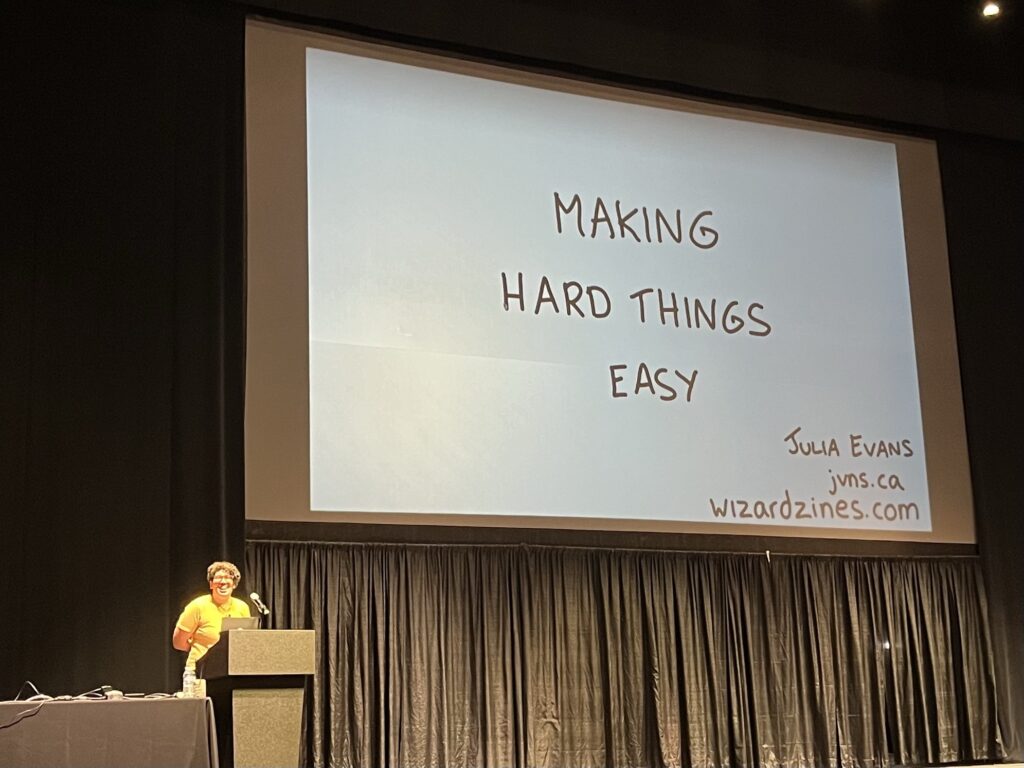
She covered Bash, HTTP, SQL, and DNS. She’s great at finding fun ways to explain complex topics. Here’s her list of tricks for explaining hard things:
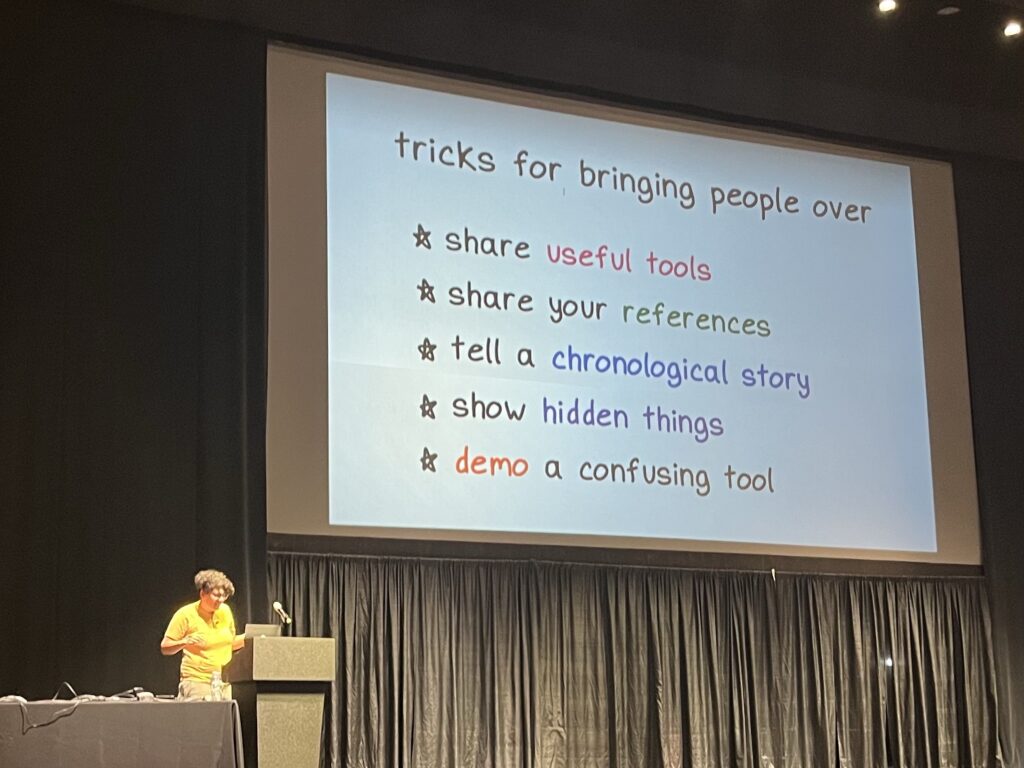
She followed this up with a list stereotypical people who take care of h
Drawing Comics at Work
Randall Munroe was the perfect ending for Strange Loop. He gave an interesting look back at how he went from NASA to web comics. It all started with this.
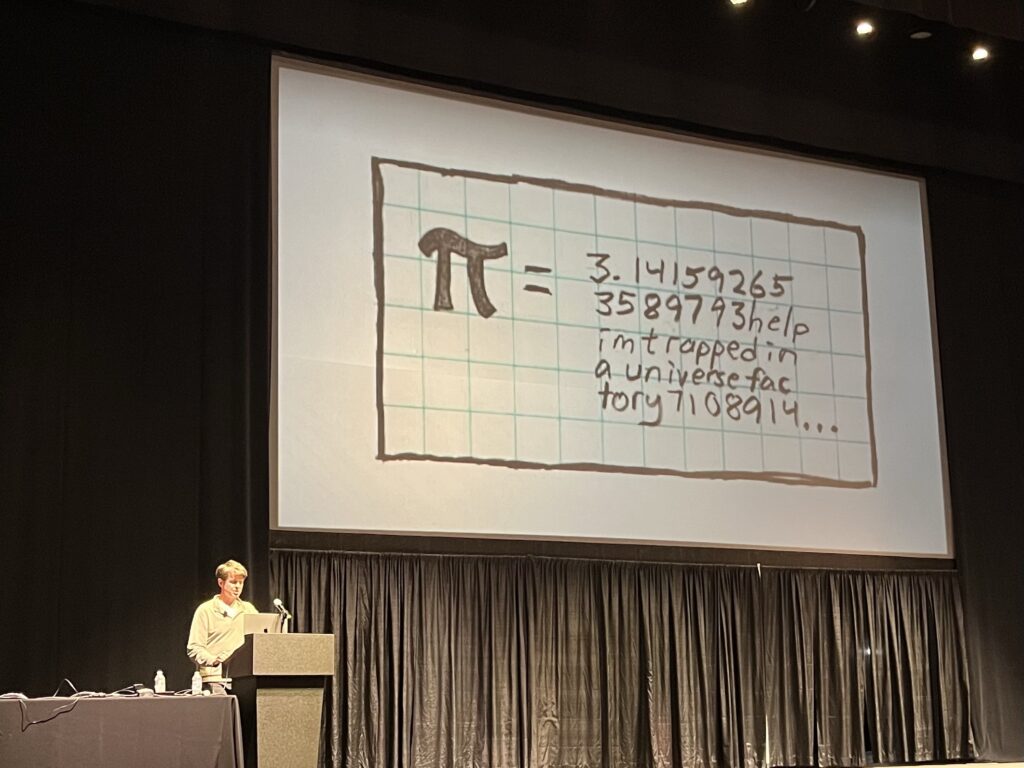
That comic got picked up by BoingBoing and suddenly everybody wanted a copy. He talked about several more comics, including my all time favorite:
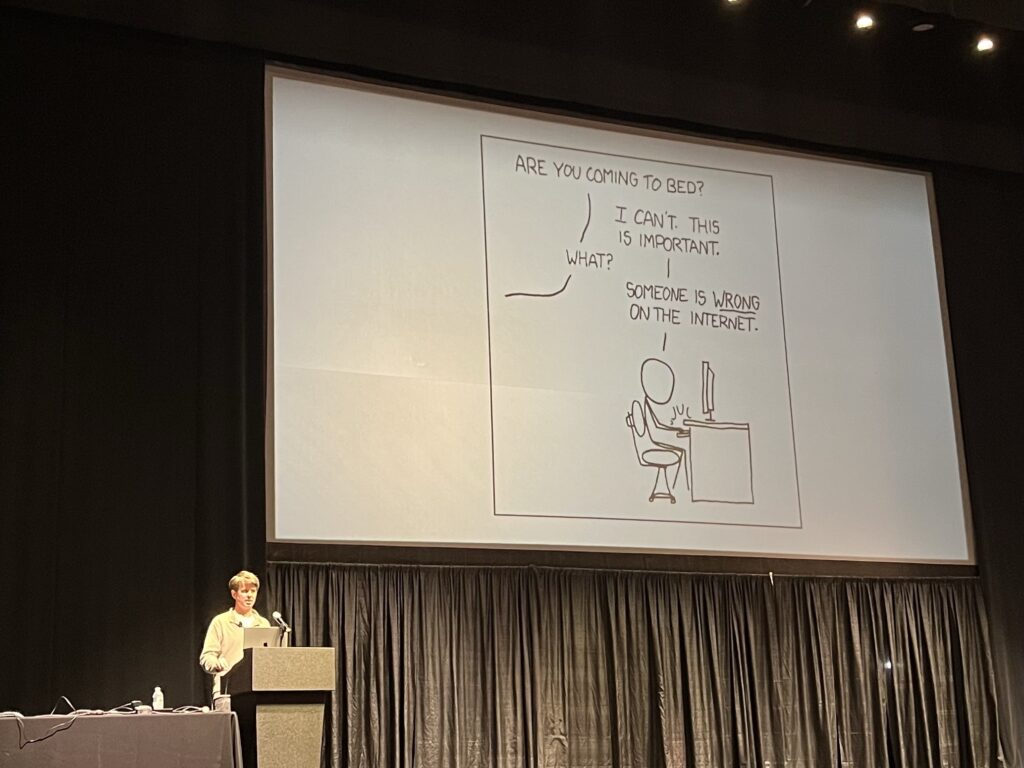
Not everyone is nice on the internet. Do your own thing and don’t feed the trolls.

